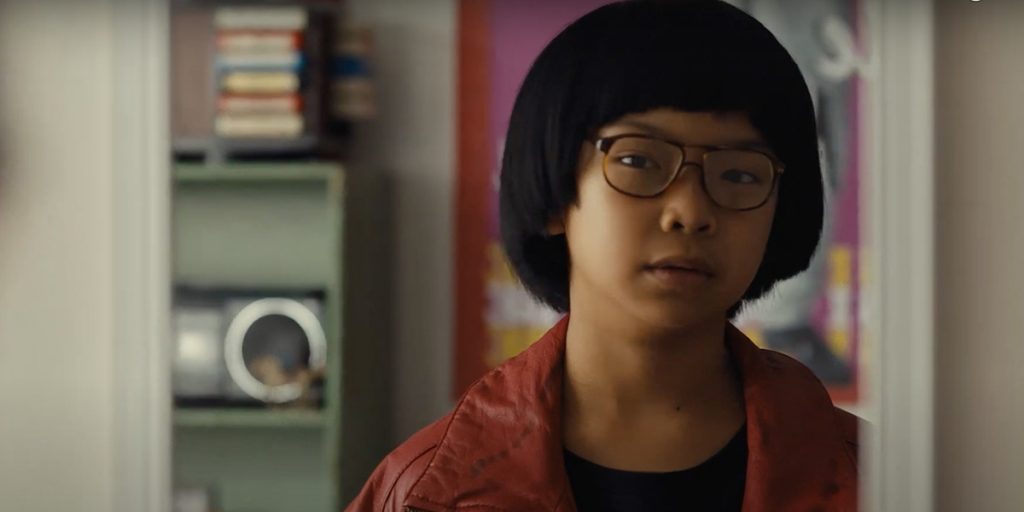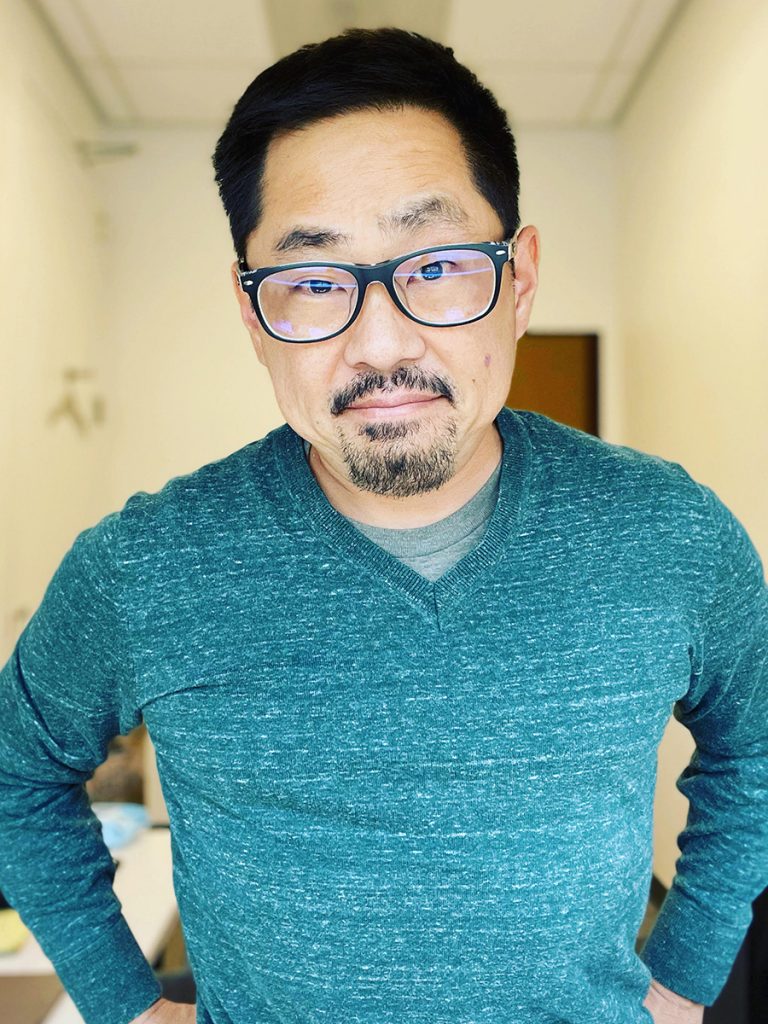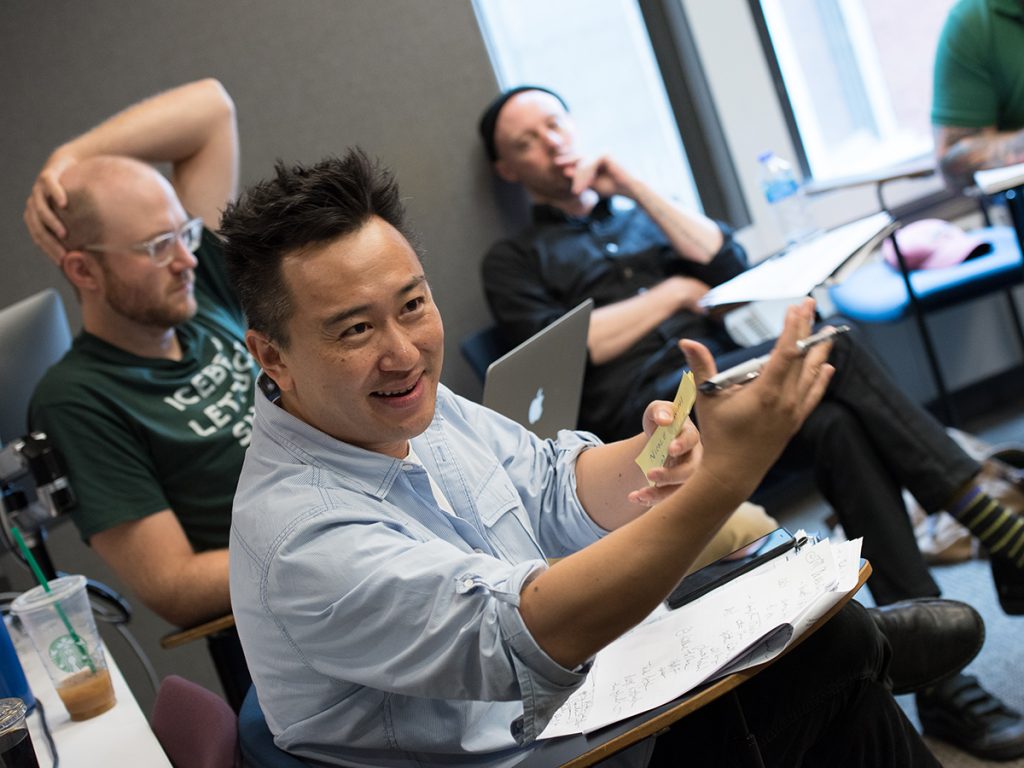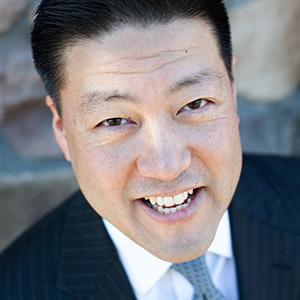AAPI Heritage Month: The Price of Lack of Representation in Media

Earlier this month, Leading Asian Americans to Unite for Change (LAAUNCH) released a report that found 42 percent of Americans are unable to name a single prominent Asian American. Nearly 80 percent of Asian Americans surveyed by LAAUNCH said they “do not feel respected and are discriminated against in the U.S.”
Another report, this one by the USC Annenberg School for Communication and Journalism, looked at the 1,300 top-grossing films between 2007 and 2019, and found that out of 51,159 speaking roles, just over 3,000, or about 6 percent, went to AAPI actors. Just 44 films (3.4 percent) had an AAPI lead or co-lead actor.
We asked Emerson faculty members about this lack of representation and visibility in the media — film, TV, news – how it affects Asian Americans both inside and outside the industries, and what needs to happen to reverse the trend. Weiko Lin and Paul Niwa provided their thoughts in writing; Ed Lee’s comments were transcribed from a Zoom conversation.

Ed Lee
Assistant Professor, Visual and Media Arts
Comedy writer
“It has a couple of different effects. [T]hat lack of inclusion, coupled with the idea of having Asian Americans in TV shows written by non-Asian Americans, [means] we’re usually portrayed as stereotypes, whether it’s a perpetual foreigner, or for women, sometimes its oversexualized, for men it can be undersexualized, there’s the ‘model minority’ myth, there’s the … martial arts character. Everything is sort of made to ‘otherize’.”

Weiko Lin
Associate Professor, Visual and Media Arts
Screenwriter, producer, author
“The severe lack of representation of multi-dimensional Asian American characters in mainstream media has reached a critical juncture. Century-long stereotypical portrayals in film and television have dehumanized the AAPI community. Without those authentic, complex characters in leading roles, empathy and humanized connection is drastically diminished. This is one of the attributions to the visible violence and bigotry against the AAPI community.”

Paul Niwa
Associate Professor, Journalism
Broadcast and interactive journalist
“Asian Americans are largely invisible in our society. In a recent survey, 42 percent of American adults polled couldn’t name a single Asian American. The most cited person was Jackie Chan, who is not an Asian American. Asian Americans are underrepresented in board rooms, legislatures, screens, and newsrooms.
Despite the appointments this month of Versha Sharma and my dear friend, Neeraj Khemlani, to the top posts of Teen Vogue and CBS News, respectively, Asian Americans are rarely seen among newsroom managers. Americans are generally uncomfortable [with] Asian Americans as their boss, but ironically, they want Asian Americans to be frontline hospital workers during a COVID outbreak.”
Weiko Lin
“To be clear, this isn’t an overnight social eruption. Anti-Asian sentiment has long been seeped in pockets of the American psyche. Creating stories of all genres that are populated by Asian American characters and perspectives is essential.
By having a permanent seat at the table, those narratives can be championed, produced, and distributed in a meaningful and lasting way. Without stories that accurately reflect the world we live in, we lose the opportunity to foster respect for one another and fall in danger of losing our very humanity.”
Ed Lee
“The hate crimes that are happening as a result of our portrayal in the media, as a result of our former president calling the coronavirus the ‘China virus’ or ‘kung flu,’ there are really immediate consequences to that, which is that it created a permission structure to treat all Asian Americans as some kind of ‘other’ that might have done something evil, which again, is playing into stereotypes that have existed since the 1800s. We are under attack, but we also don’t have a lot of stories that show that we are valid, we are human. And that’s what I’m trying to do in my writing, to show Asian Americans that we’re not alone.”
Paul Niwa
“The suppression of the Asian American story in our country, is again, making Asian Americans a wedge against other communities of color. During the lockdown, conversations with other Asian Americans showed the underdevelopment of the community’s racial identity.
Asian Americans don’t know about laws to suppress their vote, to ban their property rights, and to deny their legal protection from the police, so it’s hard for them to see themselves in the Black Lives Matter movement. They don’t know how Asian Americans were the majority in the Northwest in the late 19th century and were depopulated, so it is hard for them to sympathize with the genocide of Native Americans. And, they haven’t been taught about the imprisonments of Japanese Americans during World War II, so it is hard for them to understand the discrimination against Chicanos and Arab Americans.
Primary, secondary, and higher education is failing the fastest growing racial group in the United States. It is making them less empathetic, while also creating a permanent foreigner, scapegoat class in this country.”
Ed Lee
“What needs to happen? We need more Asian American characters that are onscreen who Americans can identify with… normalizing Asian Americans within the American experience. And that doesn’t mean whitewashing us, but it does mean showing us as human and as people who contribute as much to American society as anyone else.
Another thing is to stop portraying us as stereotypes [in media] and treat us with dimension …with vulnerability, with real relationships, with complexity, and that happens when you hire Asian American writers, directors, producers, executives… We need more Asian Americans behind the scenes so we can portray the Asian American experience in an authentic way.
The third thing that needs to happen… is that an environment needs to be created where discussions about issues of race [are] encouraged. It’s one thing to hire Asian Americans, or really any BIPOC, in these roles, but it’s another thing to actually give equity to these folks. It’s another thing to actually give us a voice in the process and… have an environment where [we can have] debates about whether representation and depictions of our cultural experience is positive or negative…”
Paul Niwa
“The recent attention toward Asian America has unmasked gaps in our nation’s inclusiveness. Companies, organizations, and individuals haven’t done any training and haven’t given much thought to AAPIs in the past. In their newfound interest to show support for AAPIs, they are left without a script, often stumbling and revealing the racial biases that they have worked so hard to hide.
I’m delighted that every media company wants to celebrate AAPI history month this year. But the price of admission to this Asian American “festival” is an unintended insult. Streaming services like Netflix, HBO [Max], Apple TV and PBS are proudly displaying their catalogs of Asian films with a very thin list of works about and done by Asian Americans. Their attempt to show support reveals their ignorance and inadvertently cements the stereotype that the AAPI community is foreign and not American. I hope that media companies will notice that they are missing the stories and artists from the households with the strongest buying power in the U.S.”
Categories